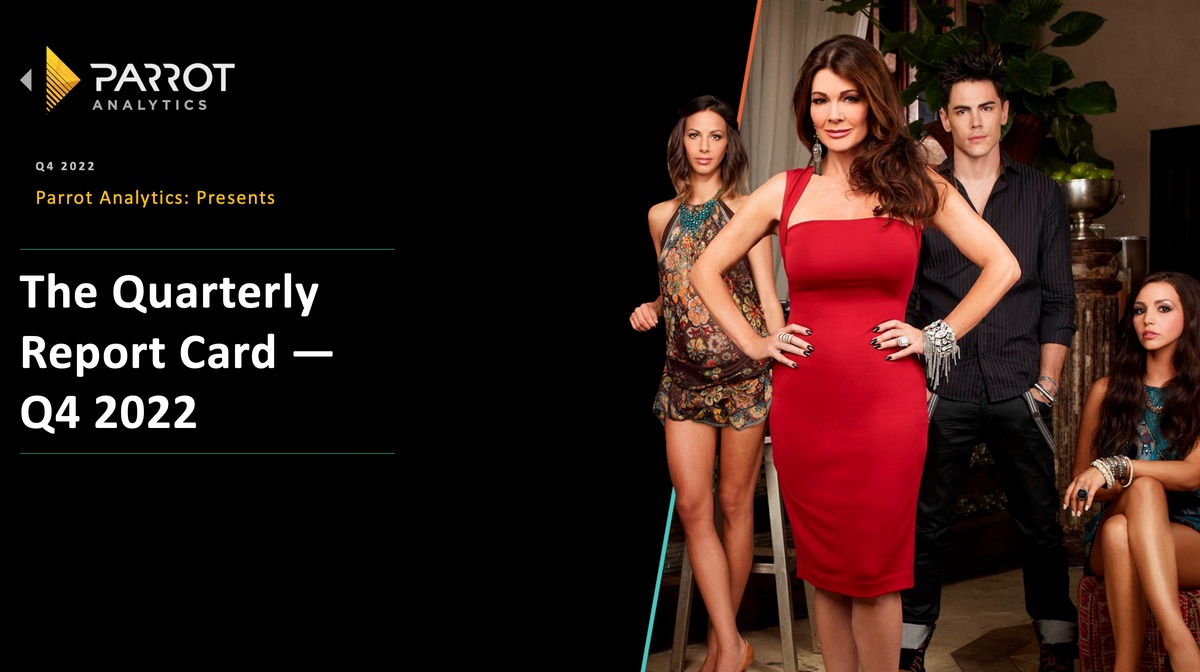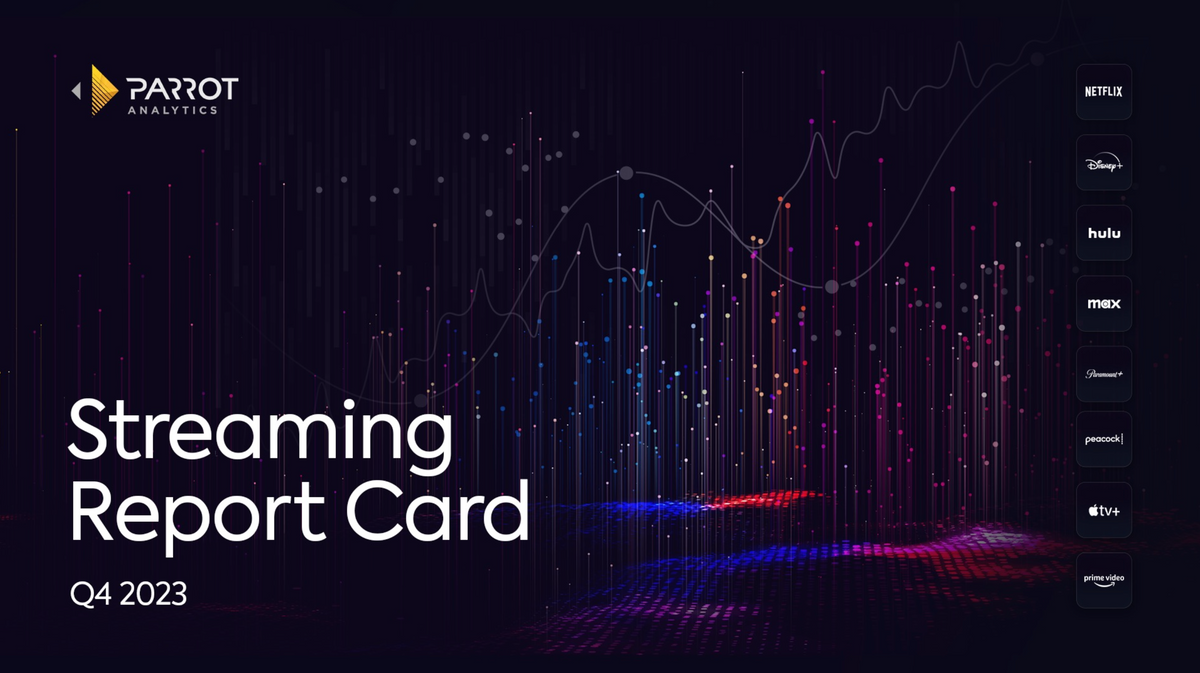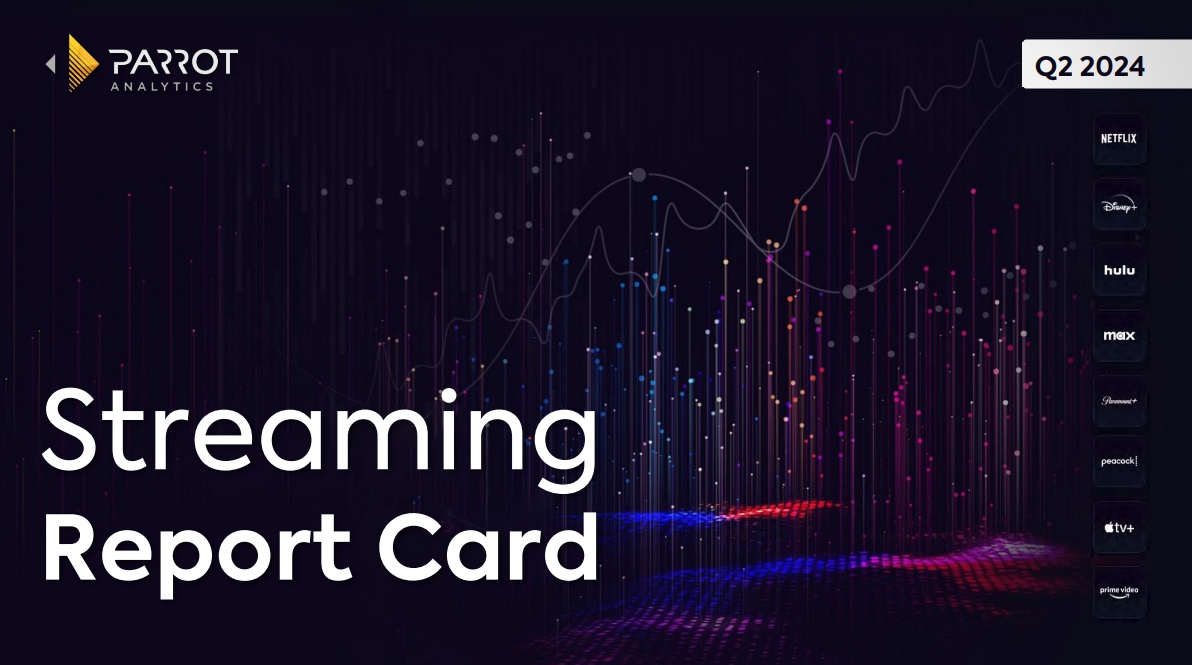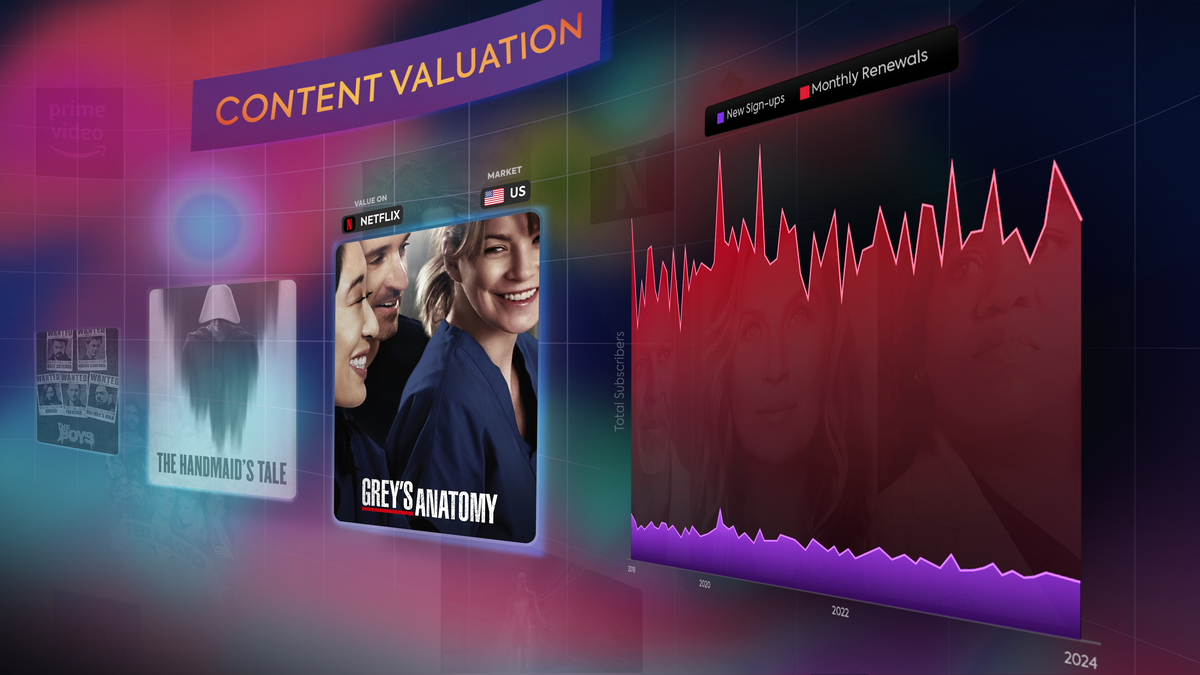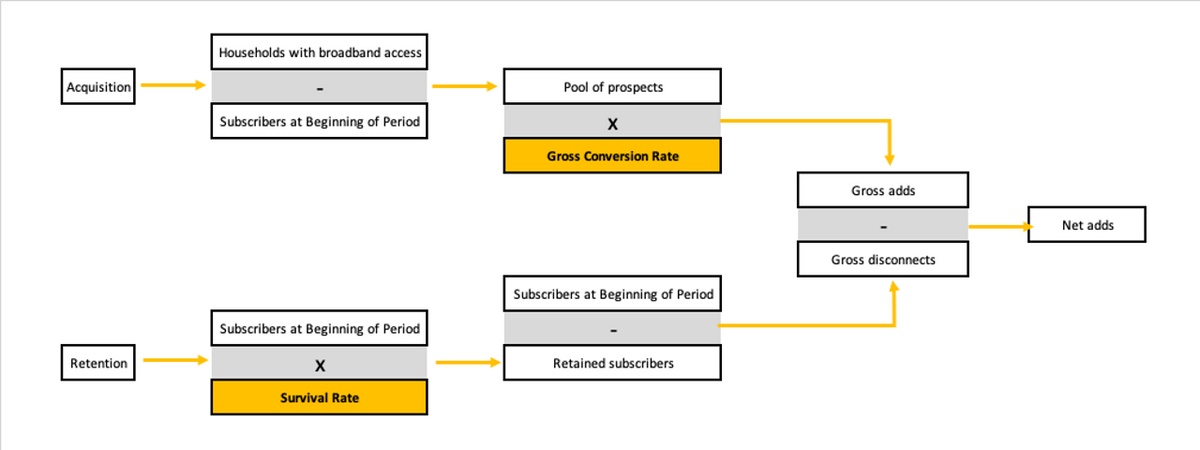By reading this article you will understand:
- What activity falls on the entire consumer activity spectrum and what signals we collect as part of the demand metric.
- How we filter through the noise of audience activity using our DemandRank system to attribute higher weight to higher effort activity.
- Key differentiators between demand and traditional audience measurement systems, such as linear ratings.
Parrot Analytics’ comprehensive entertainment analytics system captures the world’s largest audience behavior dataset. We extract the signals from the noise to deliver the first globally standardized measurement of audience demand for all markets, in all languages and across all platforms and devices. Now for the first time ever, it is possible to value a piece of content or IP with a precise $ value figure for each title, service and market.
Our technology quantifies global consumer demand for TV, movies, and talent. Billions of people interact with content and talent each month and Parrot Analytics systems collect and analyze the activities, interactions and behaviors from over 2 Billion people every day, which includes exclusive first-party consumption datasets from hundreds of millions of households globally as well as hundreds of millions of households' search, posts, reading and social interactions activity.
Our data sources include search engines, wikis and informational sites, fan and critic rating sites, social video sites, blogs and micro-blogging sites, social media platforms, peer-to-peer apps and open streaming platforms.
A paradigm shift in global entertainment analytics
By measuring demand for TV, movies, and talent we are quantifying the attention economy. Our system captures how much attention, engagement, desire and viewership is expressed by consumers for content and talent, all around the world.
Demand for content and talent is what drives transactions and consumption on all platforms, such as linear broadcasts, AVOD or SVOD services - and our audience attention measurement system captures this audience demand empirically. We do not use estimates or surveys, we report the total market demand expressed for each title or individual in every country, exactly as captured by our system.
Our collection system captures billions of new data points each day across the entire consumer activity spectrum, including video consumption (streaming and downloads), social media engagement (hashtags, liking, sharing) and research actions (reading about shows, writing about movies, etc.)
Our DemandRank system ensures that the important demand signals are weighted more heavily than others (e.g. watching or downloading a series or movie). We use factors such as the level of effort required as a key arbitrator, enabling us to filter out the “noise”, which results in a demand metric that is much more than a measure of “buzz”. The more time and consumer effort required, the more importance is attached to each signal. This is just one of the factors that sets us far apart from single-source systems, for example, “social listening tools”.
Once all the signals are weighted and combined, the audience demand for each show or individual almost anywhere in the world can be compared with that of any other show or person using our globally standardized Demand metric, which is presented as a demand multiplier allowing fair comparison against the market average.
The end result is that we are able to provide a sophisticated, holistic view of each series, movie or individual's demand in a market. In doing so, our demand measurement system is able to quantify today’s attention economy. And because all data sources are weighted by their importance we deliver a much more robust approach than any other system based on single-source activity tracking.
In addition to demand data, we have created an even more valuable layer of data that leverages the highly nuanced signals and demand layers to create a set of metrics specifically designed to assess every element of success for content and talent in the attention economy.
The Pulse is a way of understanding a TV show's, movie's, or talent's overall performance in an instant, helping inform decisions along the entire content development and monetization lifecycle.
With this new level of understanding audience attention, we can better understand the shifting media landscape which leads to more efficient ways of monetizing demand. In April 2021, The New York Times documented the application of demand data to interpret the latest Netflix earnings call: "Netflix’s Dominance Starts to Slow as Rivals Gain."

A summary of our methodology
The key elements of our demand measurement approach can be summarized as follows:
-
Unbiased: Our methodology extracts empirical evidence on consumer behavior from consumer actions, avoiding biases that come from panels and surveys.
-
Robust: Our sources mirror a wide diversity of consumer actions that are collected at massive and global scale on a recurring basis, adding robustness and minimizing failure points.
-
Nuanced: Our system transforms a diverse set of natural consumer actions into signals that typify intent, reflecting nuances on how consumers react to different content.
-
Holistic: Intent determines demand and demand not only includes viewership but also interest to learn about a title or talent and a desire to share, comment and create. This offers our clients a holistic perspective on the relevance of content and talent in consumers’ lives.
-
Granular: Every day, demand is measured on a per title/talent and per country basis, setting a transparent standard that eases comparability of results across titles and markets.

The global measurement standard
We have built the world’s most robust global content and talent demand measurement system. Here is why:
Empirical data collection
All data collected is passive and is therefore objective, unlike active data where participants know their data is being captured, which may influence their actions. Instead, our global title and talent demand measurement approach relies on robust observational data.
Unbiased
Because we track billions of data points globally every day, based on real consumer actions and never based on projected or inferred estimates, our measurement approach captures what people are actually doing - not what they say they do. We do not use surveys or panels.
Robust because we are multi-source
We have created a holistic measurement standard that integrate signals from a variety of data sources including social media, social video, research and P2P downloads. For a title or individual to be truly in-demand they must perform well right across the activity spectrum involving multiple sources.
Globally standardized and granular
We measure consumer attention on a global scale and to do this we have developed a standardized metric called the demand multiplier. This enables our clients and partners to not only only understand differences at the individual title or talent level within a market, but also allows for comparisons on an apples-to-apples basis across markets.
Holistic and comprehensive
Parrot Analytics’ methodology is holistic and comprehensive, and does not just include a subset of online content behaviors, within a single app for instance. Instead, we incorporate the content preferences of the largest empirically measured online audience.
Nuanced and intention weighted
The more important an activity from a data source, the higher we deem its contribution to our demand dataset. In other words, the more effort (time) required on behalf of a consumer, the more importance we attach to the signal. This allows us to truly understand and compare which shows audiences are going out of their way to seek out on a granular level.
Measuring total market demand
Rather than aiming to be a proxy for the viewership of a title on any given channel or platform, our demand measurement approach reveals the total market demand for a title across all platforms. Naturally, this allows us to provide actionable recommendations to our clients by comparing on-platform views, with off-platform market demand.
Capturing fan activity
We provide a true reflection of the effort audiences and fans go to when actively engaging with their favorite title - as opposed to passively watching on their couch, or channel surfing, or watching “just because it is on”. We reveal which titles and talent have an active fanbase.
Historically comparable
Parrot Analytics has been measuring content in 200+ markets around the world since 2015 in a standardized fashion. Armed with many years of data, we can provide insights across seasons, year-on-year growth in platform market share as well as quantifying the cumulative value of each platform’s slate.
Demand is a leading indicator
Demand is available months prior to content being made available on a platform, providing an indication of the future success for all types of content. Any demand drivers (e.g. teasers, trailers and marketing promotions) are incorporated into our measurement - the more audiences respond to any stimuli, the higher the pre-release demand captured.
Self-balancing for biases
Our system captures billions of new data points each day from the Internet, across the entire consumer activity spectrum. Therefore all biases are minimized due to the fact that we have a very large population under measurement.
Data anomaly protection
Robustness is increased by our ongoing work of reducing dependencies towards any one particular source. We have processes in place to mitigate skews and anomalies that can occur with single data source systems. Furthermore, we actively protect against any abnormal demand-generation activities.
Quality assurance from systems
We have semi-autonomous demand data point health-checks in place to ensure quality of data. Our demand measurement system utilizes mathematical, statistical and multi-criteria approaches (MCDM) to continuously evaluate and enhance the accuracy of data.
Quality assurance from humans
Our system has the ability to detect consumer interactions and activities in over 200+ languages and over 200+ countries and yet we are adamant to carefully and manually check every single title and talent that is on-boarded into our system. We have robust processes in place for manual source mapping checks as well as ongoing quality assurance checks by our catalog and metadata experts.
Locally relevant
The total universe of signals from all our sources is continuously screened. For instance, all relevant P2P activities are recorded in every country on earth and local title names including AKAs (“also known as”) are used to ensure we capture all relevant signals, in all languages, for all titles.
Designed for a fragmented ecosystem
Not a month goes by without yet another SVOD platform launching, aiming to build their own library of (niche) content and without the need for relying on traditional ratings. Our methodology is designed from the ground up to provide clarity in an environment of proliferating platforms each demanding consumers’ attention.
Consistent across all markets
Our measurement approach allows for a 1:1 comparison of content and talent demand within a market and across markets. Global title and talent data is per capita adjusted which ensures a fair comparison between territories with varying population sizes.
Consistent across all networks and platforms
Using global content demand data, titles can be compared to the average title in a market, as well as platform averages, or a genre averages - irrespective of rights holder considerations. Because we measure market demand and not platform views, we offer an independent, platform-agnostic view of content consumption.
Relevant for today’s consumer journey
To interact with their favorite content and talent, some consumers will decide to search, others will share something on social, still others will write some fan articles or download the content using Bittorrent. Whatever the consumer journey looks like, it is captured in our demand measurement approach.
Capturing tomorrow’s behaviors
We are not only capturing interest from consumers that are actively engaging with TV, movies, and talent across multiple screens simultaneously, but we are also setup to capture the way people are interacting with content and talent tomorrow. Our approach is one of total market demand, which includes every screen everywhere.
Optimized for the attention economy
Consumer attention is being pushed and pulled in all directions. Today, audience attention is no longer bound by physical barriers such as platforms or channels, audience attention is tied to a specific title or individual in a specific territory at a specific time. This philosophy is at the heart of our demand measurement approach.
The answer to today’s content valuation challenge
We believe that demand is the best gauge of a title’s success, both critically and commercially, rather than relying on SVOD production spend figures. Not every production dollar invested is equal. Global content demand quantifies both the value of content, and to what extent content performance leads to the creation of long-term business value.
Conclusion
Demand-based content and talent measurement is the most comprehensive methodology available today to truly understand the attention economy on a global scale:
-
Our demand measurement system is capable of quantifying how much content and talent is wanted across all platforms and devices, globally.
-
We pull in billions of new data points each day right across the activity spectrum, including video consumption sources (streaming/downloads), social media sources (hashtags, liking, sharing) and research and commenting sources (reading about shows, writing about shows, etc).
-
We then weigh up all these consumer expressions of demand using time as one of the main arbitrators: The more effort (time) required, the more importance we attach to each signal.
-
Once all the signals are weighed up, the audience demand for titles can be compared with that of any other title using our standardized demand multiplier, for almost all countries worldwide, every day.
The resulting global TV, movie, and talent demand dataset is based on the most comprehensive methodology available today to truly understand the attention economy on a global scale.






